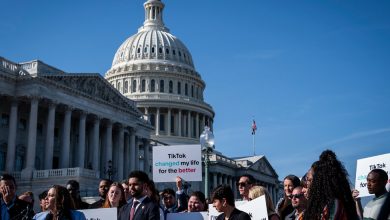Uber Close to Deal for Partnership With San Francisco Taxi Outfit

SAN FRANCISCO — Uber’s plan to lure more taxis onto its platform in the next several years could soon take another big step.
The company is close to a completing an agreement with a San Francisco partner, Flywheel Technologies, to allow Uber passengers in the city to call a taxi through the Uber app, according to four people familiar with the matter and a video presentation by the city’s transportation agency that was viewed by The New York Times.
The next step is for the San Francisco Municipal Transportation Agency’s board of directors to approve tweaks to a pilot program at its April 5 meeting. The city’s director of transportation would then need to authorize it, paving the way for Uber and Flywheel, which operates an app used by hundreds of taxi drivers in San Francisco across several taxi companies to accept rides.
The agreement, after a similar partnership between Uber and taxi companies in New York City was announced last week, would mark an abrupt departure from the years of fierce fighting between the two groups. If approved by regulators, the partnership in San Francisco could begin as soon as May.
Uber has called the taxi industry corrupt and greedy, and a San Francisco taxi company once sued Uber in federal court, accusing it of predatory pricing practices. Some taxi drivers are pushing back against the idea of a partnership, worried that it would lead to lower earnings and make it more difficult for longtime taxi customers to get affordable rides.
The agreement is particularly surprising because San Francisco, Uber’s hometown, has been among a group of cities that have at times aggressively resisted Uber’s business. Uber, along with other companies that use gig workers, like Lyft and DoorDash, backed California’s Proposition 22, a measure that gave gig workers some limited benefits but prohibited them from being considered full employees. Though the measure passed statewide in 2020, before a judge threw it out last year, San Francisco was one of the few counties where a majority of voters opposed it.
In recent years, Uber has struck partnerships with taxi firms, mostly outside the United States. The company said in February that it had added 122,000 taxis to its platform last year.
More About Uber
- Bouncing Back: After a pandemic-induced slump, the company reported in February a sharp rise in revenue from a year earlier.
- New Partnership: The company is teaming up with two companies in New York City to offer users the option of riding in a yellow taxi.
- Legislative Efforts: Uber and Lyft are seeking to shield their business model by backing bills that would classify drivers as contractors in exchange for a union.
- Interview: Jill Hazelbaker, a top executive, helped Uber weather sexual assault accusations. Here she talks about what it took.
The taxi industry had lost customers to ride-hailing services like Uber and Lyft even before the pandemic drastically reduced travel demand. The number of taxis in operation fell to 400 during the pandemic — from 1,300 — before recovering to 600, the Municipal Transportation Agency said.Teaming up with Uber could give taxi drivers access to a much larger pool of riders, while Uber would gain supply in the form of hundreds of taxi drivers.
Last year, San Francisco approved a test program that would allow passengers who ordered a taxi using an app to receive a guaranteed upfront cost, similar to how Uber and Lyft function. The goal was to help taxi drivers earn more money, in part by countering a phenomenon called meter anxiety — the idea that the unease of watching a ride’s cost increase in real time on a taxi meter prompts riders to cancel a trip or avoid calling a taxi in the first place. The upfront cost was required to be the same as the trip’s cost if calculated using a meter.
Now Uber wants to join this experiment, with a twist: If San Francisco approves so-called “third-party dispatch services” like Uber to participate, the upfront cost that Uber charges customers to get a taxi through its app will not be required to be the same as a metered taxi ride. That means they could charge the same price as a typical UberX car ride, which is often cheaper than a taxi ride.
That has some San Francisco taxi drivers concerned that they will be offered cheap rides that earn them only a few dollars. Others worry that surge pricing — when Uber elevates rates at times of high demand — could price current low-income taxi customers out of getting rides.
“It’s just not right,” said Evelyn Engel, an executive board member at the San Francisco Taxi Workers Alliance, which backs taxi drivers. She said she and other taxi drivers had heard from the city’s transportation agency about Uber’s involvement in the pilot program.
“Uber is going to get hundreds of full-time drivers on their platform,” Ms. Engel said, but taxi drivers are “not going to even get paid a per-ride fare that allows for a dignified living.”
Muwaffaq Mustafa, 53, who has been a taxi driver for decades and now also runs operations for Flywheel Taxi — the company that once sued Uber — said he thought the Uber partnership would enrich taxi drivers and could help save a floundering industry. The slightly cheaper rides, he said, would be offset by greater demand.
“I’m optimistic if this deal goes through we will make up for all these years that were down,” Mr. Mustafa said. “More calls, more value, and it’s more money.”
George Lama, 60, a taxi driver in San Francisco for 20 years, said the partnership was needed because passengers now completely ignored taxis. He waits outside hotels in a line of cabdrivers to pick people up, he said, but they order Ubers instead.
“No one is looking at us because they’re conditioned that Uber is quicker, a larger fleet, cheaper,” Mr. Lama said.
In December, Hansu Kim, the president and a co-owner of the Flywheel taxi-hailing app, told a panel at a transportation regulators’ conference that the taxi industry’s approach to technology was like “dinosaurs that are still in the tar pits,” and that he was talking with Uber to help taxi drivers get access to ride-hailing customers.
“If we do not co-opt this technology as a standard, we are going to continue to be marginalized,” Mr. Kim said in video of the meeting, which was viewed by The Times.
Uber could benefit from the partnership by gaining access to potentially hundreds more drivers; although it said it had seen driver numbers rebound in recent months after many left during the height of the pandemic, many drivers still complain of low earnings and some said they had quit the platform or started driving less as gas prices have risen.
The Municipal Transportation Agency says taxi drivers will benefit, too. “The taxi industry is leveraging Uber’s large riding population and pushing that toward the taxi industry,” Forest Barnes, an transportation planner for the agency, told taxi drivers in a recent Zoom meeting viewed by The Times.
If taxi drivers do see more money through the partnership, that could encourage some ride-hailing drivers to consider operating taxis instead. But some taxi drivers are balking at the merger.
Marcelo Fonseca, 62, said he would rather “drive empty” than participate in driving passengers for Uber or Lyft. “My morals, ethics and principles would never allow me to be part of that,” he said.




